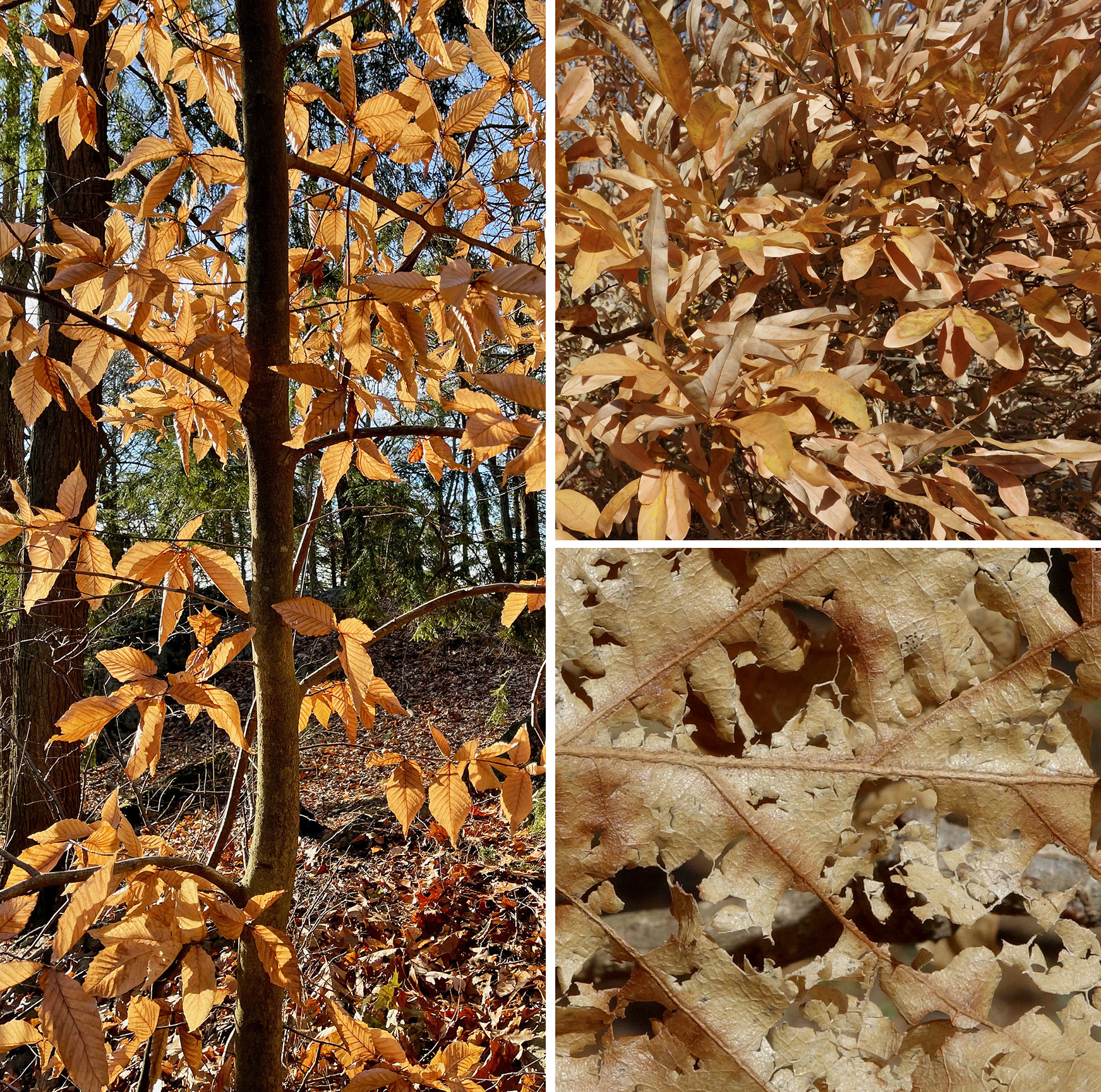Lately, I have been waiting for the leaves not to fall. It’s true. Some species of temperate woody plants do not shed their dead and withered leaves in the autumn. While the leaves go from green to tan, they remain firmly affixed to the stem through winter and into spring. You may be familiar with this phenomenon, called marcescence, with young beech trees (left image below, an unaccessioned sapling on Hemlock Hill).

A small minority of temperate woody plants species are marcescent and it is worth searching them out on cold windy days. The rattling leaves create a unique soundscape, they provide a beautiful beige texture to the landscape, and through the winter, they become progressively tattered by the elements (lower right image, Daimyo oak, Quercus dentata, 1590-52*B, in April 2017).
So how does it work? Every leaf in a temperate woody plant creates an abscission zone at the base of the petiole (so-called leaf stalk). The abscission zone is comprised of cells designed to separate from each other and allow the leaf to fall from the parent plant—and it is typically activated in the fall. However, in marcescent plants, the abscission zone is not activated until the spring. Why? No one has a clue. Just one more wonderful mystery of trees.
There are some great marcescent trees and shrubs at the Arnold Arboretum (and sometimes, only part of a tree will be marcescent). Head to the oak collection and keep an eye out for young trees clothed in last summer’s leaves. Chinese witch hazels can be marcescent; also some individuals of Ozark witch hazel (the degree of marcescence can be variable). And one of my favorites: the Oriental spicebush (upper right, Lindera angustifolia, 740-75*B) which can be found just across the carriageway from the lilac collection.
If you crave more Arnold Arboretum plant images, follow me on Instagram @nedfriedman.
